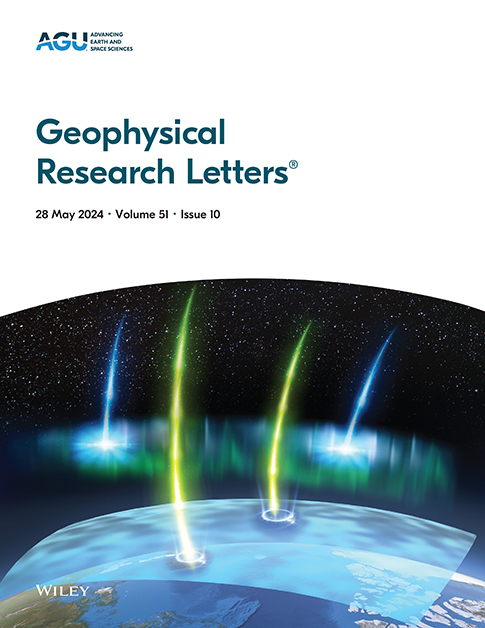Structure Heterogeneity Around the Western End of the 1999 Izmit Earthquake Rupture Revealed by Distributed Acoustic Sensing
IF 4.6
1区 地球科学
Q1 GEOSCIENCES, MULTIDISCIPLINARY
引用次数: 0
Abstract
We use distributed acoustic sensing along a submarine fiber‐optic cable to provide the first high‐resolution two‐dimensional shear‐wave velocity (Vs) model of the North Anatolian Fault (NAF) in the Marmara Sea. Using 7 days of ambient noise recordings, we extract Scholte wave dispersion curves via slant‐stacking and invert for the Vs structure, identifying a pronounced low‐velocity layer (∼0.6 km/s), indicative of unconsolidated sediments. Autocorrelation and natural migration profiles reveal a ∼3‐km‐wide fracture zone (WFZ), which we interpret as a legacy of long‐term slip on the NAF. The low Vs and structural complexity suggest the WFZ functions as a soft barrier. Hence, it could have contributed to arrest rupture propagation during the 1999 M7.6 Izmit earthquake, as well as partitioning stress between fault segments. We also resolve a flower‐like structure of faults. These results may demonstrate how fault zone heterogeneity controls rupture dynamics and stress accumulation, offering mechanistic insights into seismic segmentation.分布声传感揭示1999年伊兹米特地震破裂西端的结构非均质性
我们利用海底光缆沿线的分布式声学传感技术,提供了马尔马拉海北安纳托利亚断层(NAF)的第一个高分辨率二维横波速度(v)模型。利用7天的环境噪声记录,我们通过倾斜叠加和v型结构反演提取了Scholte波频散曲线,确定了一个明显的低速层(~ 0.6 km/s),表明未固结沉积物。自相关和自然运移剖面显示了一个约3公里宽的裂缝带(WFZ),我们将其解释为NAF长期滑动的遗留问题。低v值和结构复杂性表明WFZ具有软屏障功能。因此,它可能有助于在1999年7.6级伊兹米特地震中阻止破裂传播,以及在断层段之间分配应力。我们还分析了断层的花状结构。这些结果可能证明了断裂带的非均质性如何控制破裂动力学和应力积累,为地震分割提供了机制见解。
本文章由计算机程序翻译,如有差异,请以英文原文为准。
求助全文
约1分钟内获得全文
求助全文
来源期刊

Geophysical Research Letters
地学-地球科学综合
CiteScore
9.00
自引率
9.60%
发文量
1588
审稿时长
2.2 months
期刊介绍:
Geophysical Research Letters (GRL) publishes high-impact, innovative, and timely research on major scientific advances in all the major geoscience disciplines. Papers are communications-length articles and should have broad and immediate implications in their discipline or across the geosciences. GRLmaintains the fastest turn-around of all high-impact publications in the geosciences and works closely with authors to ensure broad visibility of top papers.
 求助内容:
求助内容: 应助结果提醒方式:
应助结果提醒方式:


